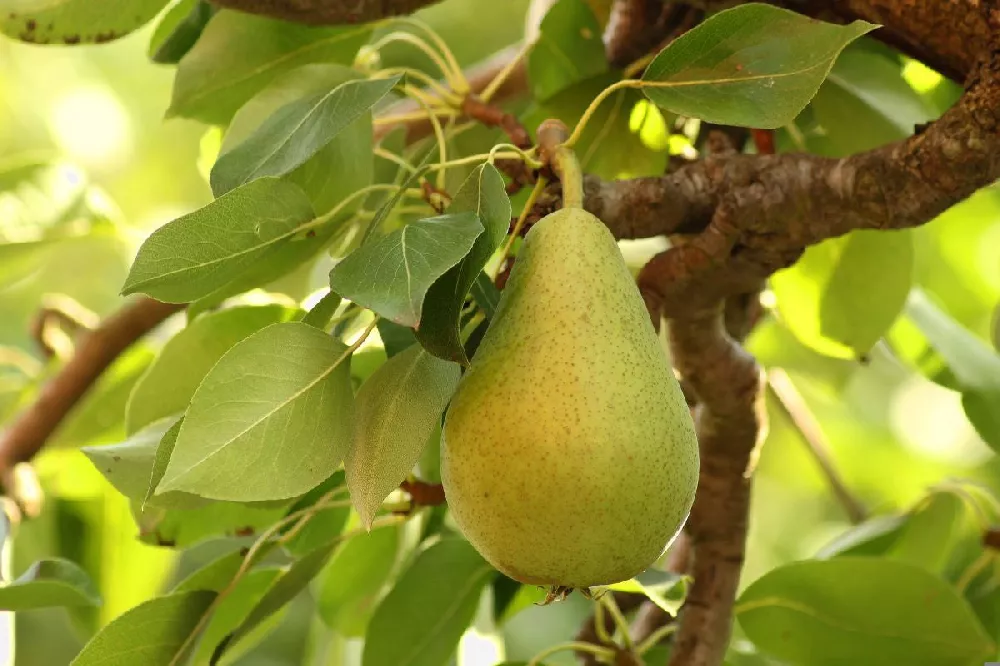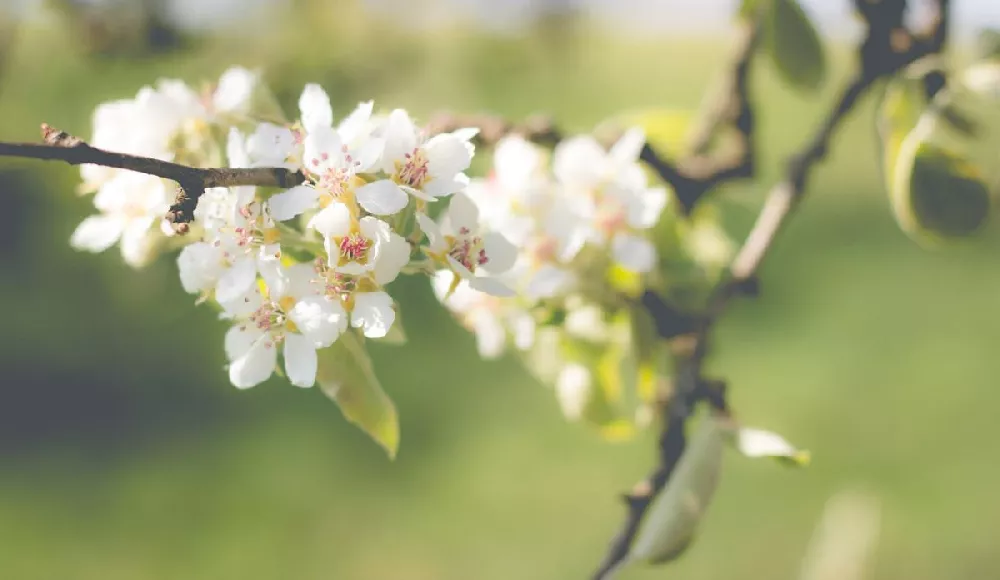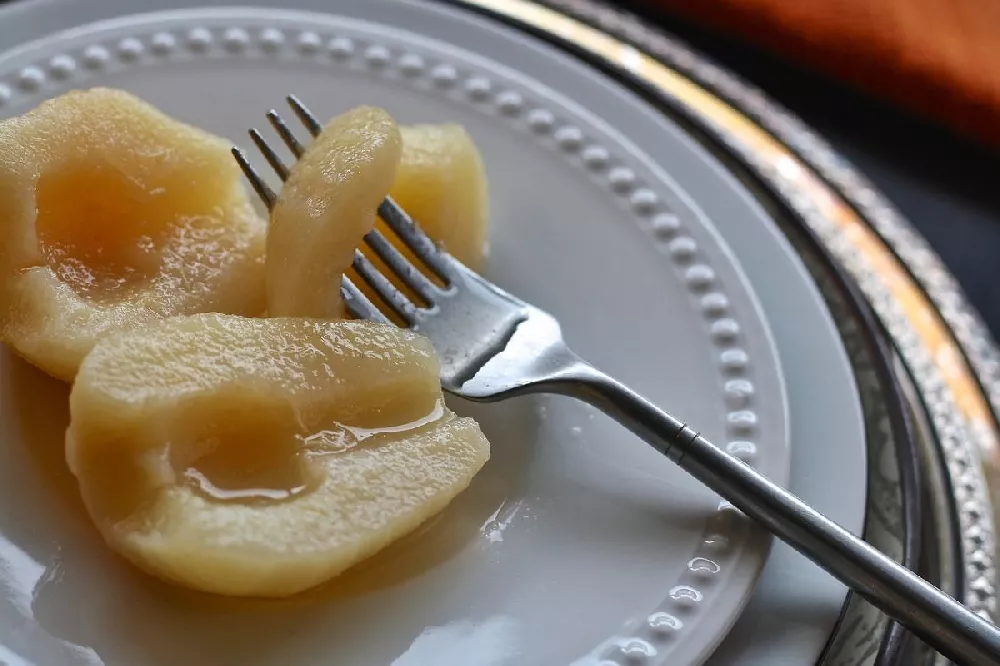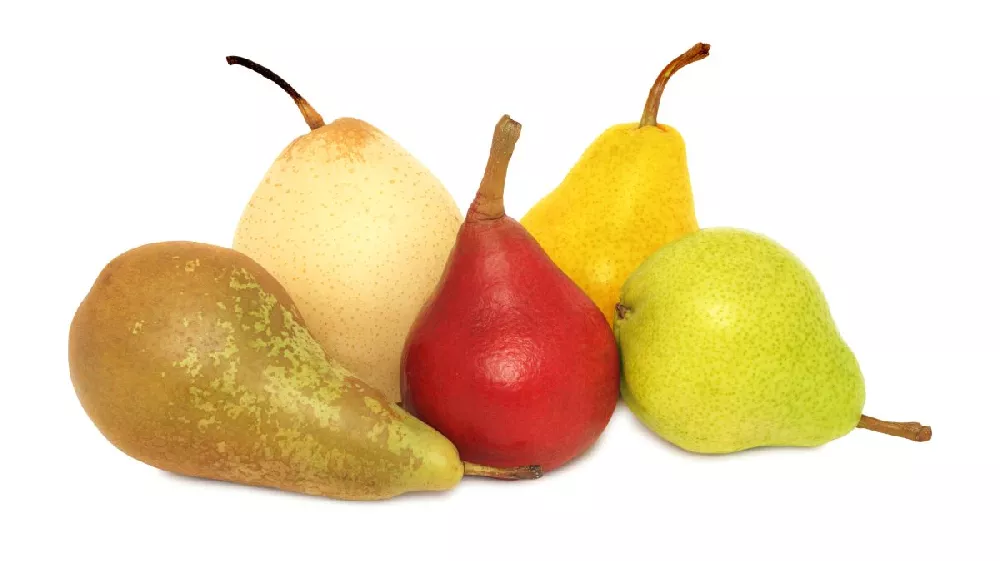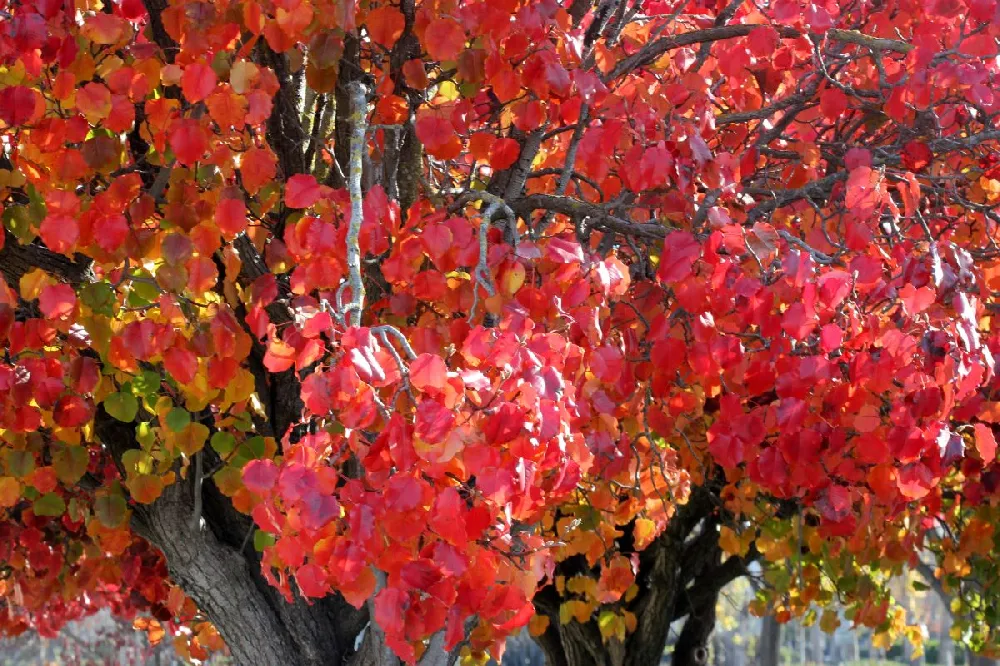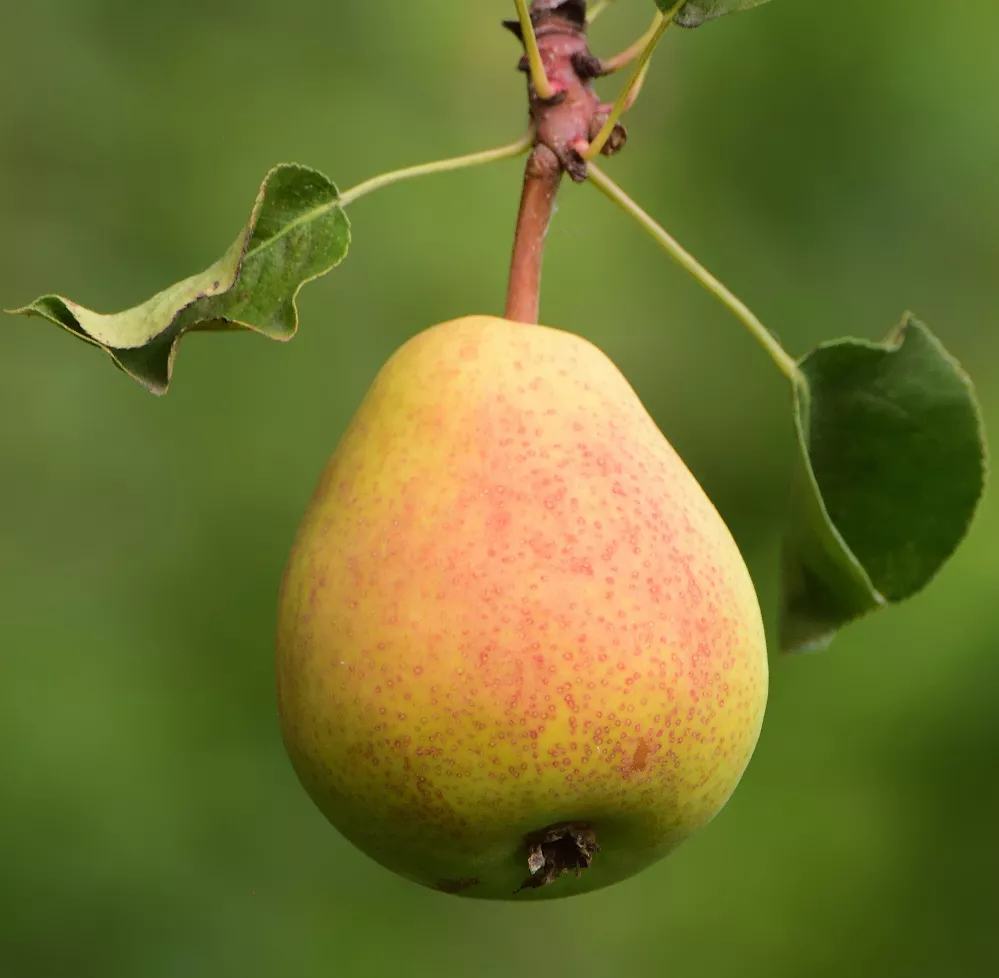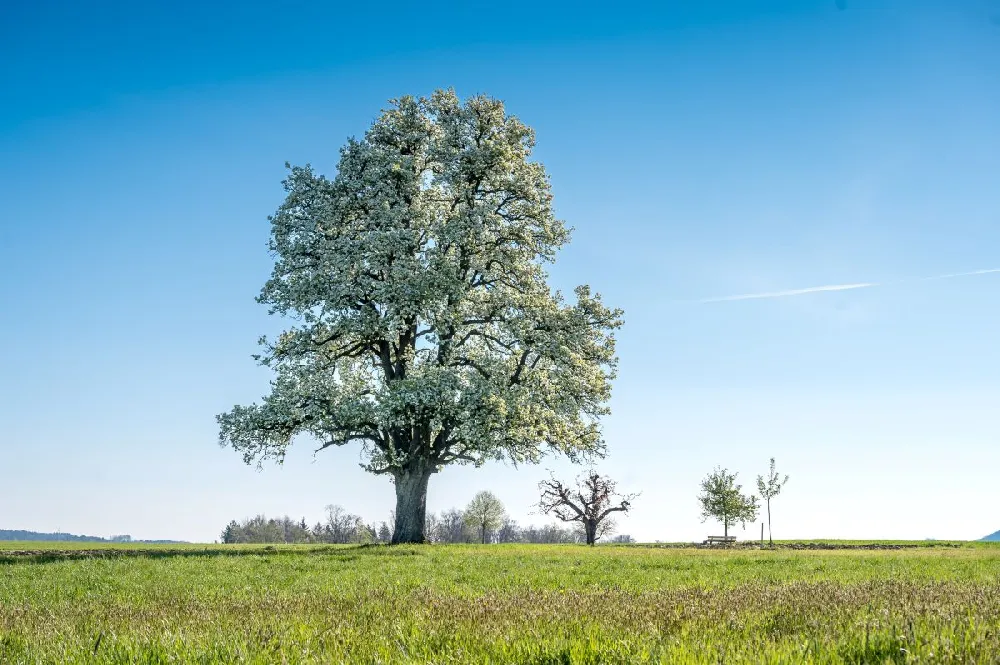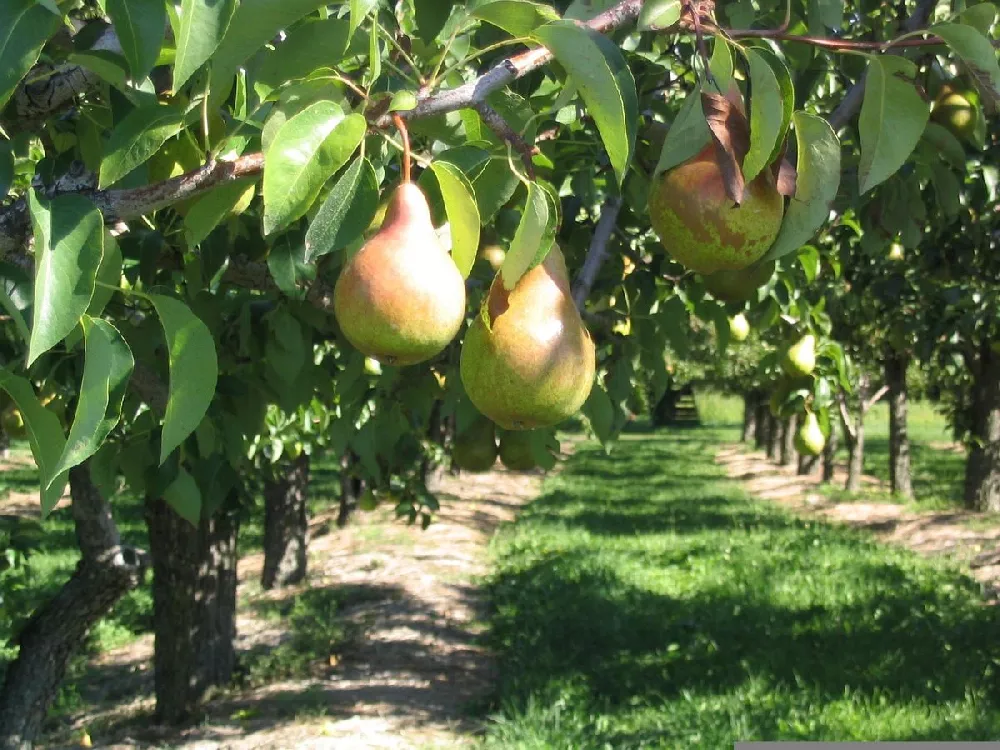- Home >
- Flowers >
- Trees and Plants with White Flowers >
- D’Anjou Pear Tree
D'Anjou Pear Tree for Sale - Buying & Growing Guide
- Ships in 1-2 days
- 1-Year Warranty Eligible
- Pots or accessories are not included unless specified in the product options.
Shipping Details:
Once your order is shipped, you’ll receive an email with a tracking number and estimated delivery date. Most orders ship immediately, but some items are seasonal and may only ship in spring or fall. These products are noted on the website.
Elegant and productive, the D'Anjou pear tree, Pyrus communis 'Anjou', is a natural choice for any gardener wishing to be rewarded for their good work. Why? Because the flesh of the D'Anjou pear, which is sometimes called the Beurre D'Anjou after the French word for butter, is sweet, smooth, and indescribably delicious. The trees are very productive, putting out heavy crops of tasty fruit each year, and they're attractive trees even when not heavy with fruit. In spring, D'Anjou pear trees are covered in pretty white flowers. Throughout the growing season, the tree's glossy dark green leaves make it a handsome addition to the cottage garden or front yard. Even in winter, the pleasingly twisted limbs make a statement against a snowy backdrop. Need more reasons to add one to your garden? Here are three:
- Unlike most pears, D'Anjou is resistant to fireblight.
- Fruit lasts well after picking, and is, in fact, tastier after a month or so.
- D'Anjou pears are drought-resistant and cold hardy.
Plant Care
Sunlight

The D'Anjou pear tree thrives in full sun — at least 6 hours of direct light a day.
Watering
D'Anjou pears need about an inch of water a week, either from rain or supplemental watering.
Fertilizing

Fertilize in spring with a balanced, slow-release product intended for fruit trees and shrubs.
Planting and Care
Planting instructions
Site your tree in soil that drains well and receives at least 6 hours of direct sunlight a day. Unpot your tree and tease out any encircling roots, which can girdle the tree and slowly kill it. Leave the roots soaking in a bucket of water while you dig the hole, which should be as deep as the root ball and two to three times as wide. Place the tree in the hole, spreading out the roots. Holding it upright and steady, fill in around it with topsoil, tamping down as you go to eliminate air pockets. Water thoroughly. Apply a 2- to 3-inch layer of organic mulch such as bark chips around the root zone to conserve moisture and hinder weed growth, but keep it from touching the trunk, which can encourage rot.
Watering and nutrients
Water your D’Anjou pear once a week unless you receive rainfall. If you’re not sure when to water, check the soil 2 inches below the surface. If it’s dry, give your tree a drink. Fertilize with a balanced, slow-release product designed for fruit trees and shrubs as per package directions in spring and throughout the growing season.
Pollination
The D’Anjou pear tree is not self-fertile, so pollinating insects will be unable to help the plant create fruit unless you plant another variety of pear near your D’Anjou. Good choices include the Bosc pear tree and the Bartlett pear tree.
Pruning
Prune your tree in late winter, before the buds break. Pears are best pruned to a central leader — a single strong vertical branch from which other lateral limbs branch off. The lateral branches should be spaced 4-6 inches apart and be more horizontal than vertical. Always prune back to a bud, using a 45-degree angled cut. You may also prune out some of the fruit if it is spaced closely together to allow the remaining fruit to grow to size. In addition, prune out any dead, diseased or damaged limbs whenever you see them.
Pests, diseases and animals
Pests that may appear on your D’Anjou pear tree include scale insects, leafrollers and aphids. Consider releasing beneficial insects such as lacewings and ladybugs to help control insect populations. You may also use horticultural oils or insecticides to eliminate them, but these should be a last resort. Diseases of the pear include crown gall, leaf spot and fire blight, though D’Anjou is somewhat resistant to the latter. Diseases have a harder time attacking your tree if you keep it healthy, so be diligent in feeding, watering and pruning to keep disease at bay.
Harvesting
Pears can be picked while they are still unripe and left in a cool spot to ripen. It’s time to pick them when they turn green-yellow in color and a few of them begin to drop off the tree. They should come off the branches easily at this point. D’Anjou pears may keep for several months, and, in fact, the flavor improves over time. Store them in a humid spot with a temperature of 32-40 degrees Fahrenheit, checking them weekly for spoilage.
Achieving maximum results
Some gardeners avoid growing fruit trees because it seems complicated, but it does not have to be. Pruning, for example, may seem difficult, but there’s really no single right or wrong way to go about it. If you prune off too much or too little, your tree is likely to be fine and will soon grow back. Other gardeners worry about extensive spraying. Whether or not you need to spray your trees, however, is largely indicated by where you live. If, for example, you are in a hot and humid climate, it is a good idea to spray with a copper fungicide after heavy rains to help your tree fend off fungal disease. If you have a particular insect pest that’s bothering your tree, meanwhile, a general insecticide may be useful. A good resource if you’re not sure what to do is your local cooperative extension agent. These horticulture professionals can help you determine if you need to spray, and, if so, with what.
FAQs
How big does the D'Anjou pear tree get?
A mature D'Anjou pear may be anywhere from 8-15 feet in height, with a mature width of 6-10 feet. You can control the height by pruning selectively to keep the tree smaller so that you can harvest fruit without a ladder.
Where can I grow D'Anjou pear?
These trees are hardy down to -10 degrees Fahrenheit, so they can be grown as far north as southern New England and the Pacific Northwest. To the south, it will thrive in all but the most subtropical regions of California, Texas and Florida.
Are D'Anjou pears good for fresh eating?
Yes, they are. They have a sweet flavor with a touch of citrus taste that makes them a refreshing summer treat. They are also excellent in fruit salads and when used in baking. If you enjoy poached pears for dessert, a D'Anjou tree is a good choice for you. They are also excellent when roasted.
Compare Similar Products
You can't add more Product Name - Product size to the cart.
OK